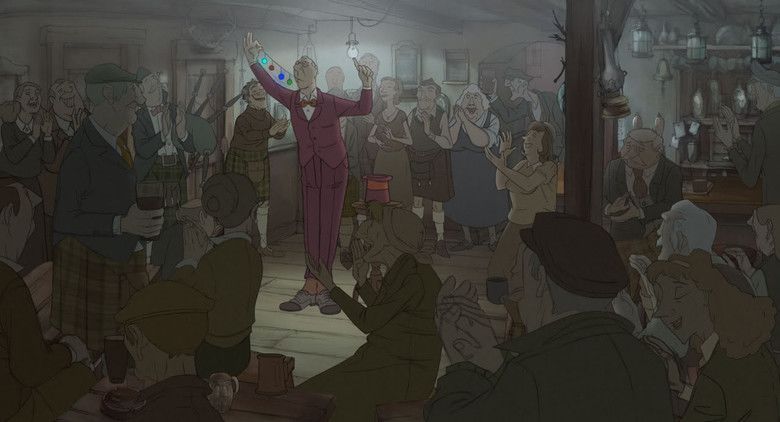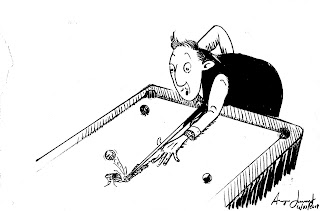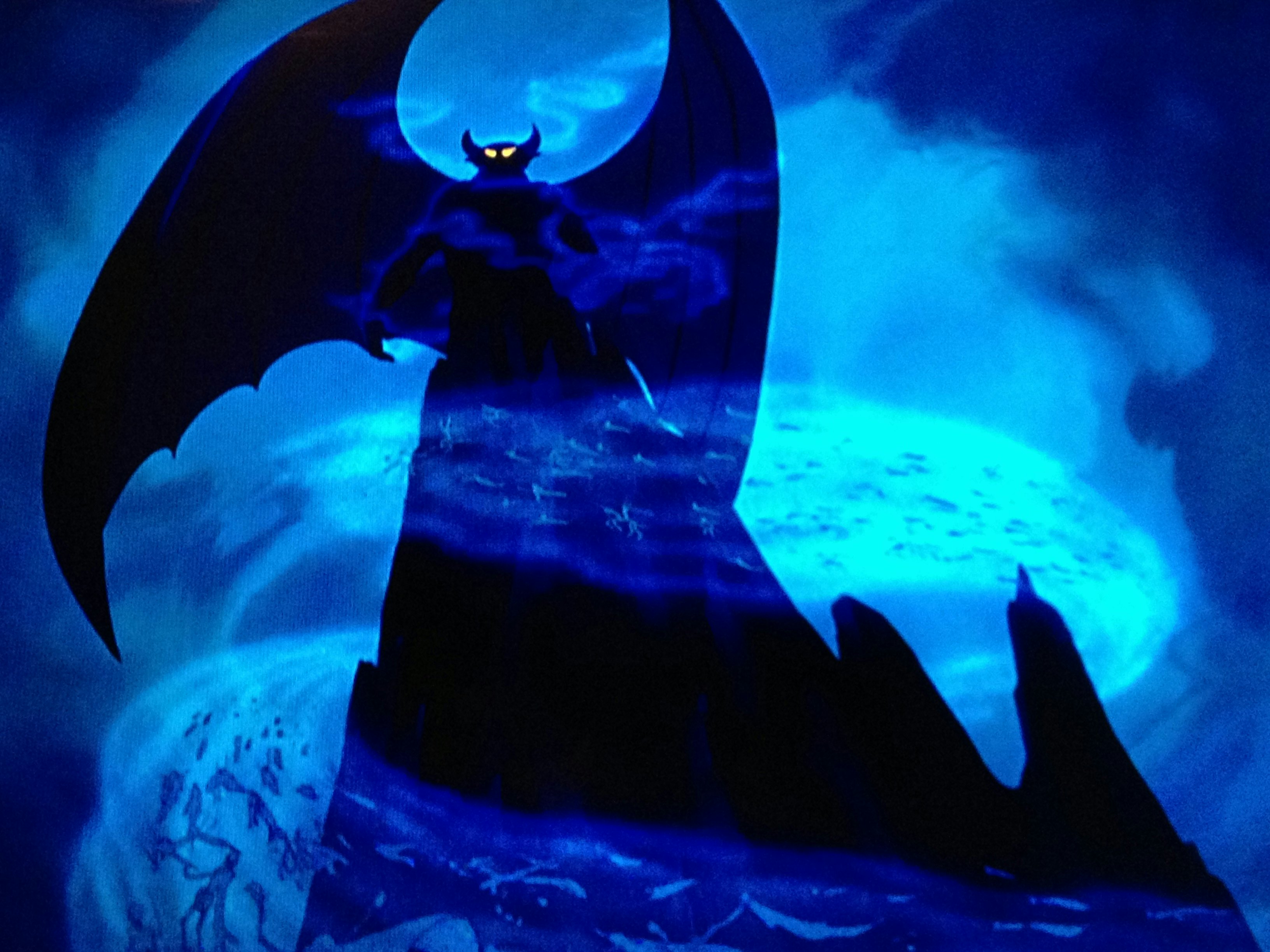Having being used to drawing from a very young age, using that skill to produce animation never really came across my mind until a few years ago, around the time I saw the film. Another great influence was meeting animator, Richard Williams at a celebration of his 80th birthday along with a Q&A at the Edinburgh Filmhouse in 2013 (I remember watching "Who Framed Roger Rabbit" the night before). The idea of breaking down the movement into a series of drawings fascinated me, and even made me question the complexity of everyday actions, such as a walk/run or a simple wave. That technical aspect of animation, never crossed my mind when I was practicing stop motion, as you have a physical model right there in front of you, it's just a matter of putting it into the correct poses for each frame.
Richard Williams taking one of his animation classes from his "The Animators Survival Kit" course.
Tati's comedy was another early inspiration for me. My Papa Bill shown me the film "Les Vacances de Monsieur Hulot" (1953), which later formed the basis for Rowan Atkinson and "Mr. Bean's Holiday". I think I've always favoured visual over spoken comedy, with the likes of Laurel and Hardy (loved the new film!), Buster Keaton, Harold Lloyd and "Mr. Bean". There's something about the art of a visual gag that appeals to me; the build-up, timing and punchline, and is something I think could work well in animation. Slapstick comedy is no stranger with animation either, with such characters as 'Tom and Jerry" and the stars of "Looney Tunes".
Buster Keaton - The stone face with great physical gag performances.
Recommended watch: Buster Keaton - The Art of the Gag (Video Essay)
Harold Lloyd - providing comedy through action and thrilling gags.
Laurel and Hardy provided not only visual, but spoken comedy. The idea of straight/funny man works at it's finest with these two and their comedy is universally loved by many generations. The music by Leroy Shield is also a firm favourite of mine, and really compliments the action on-screen.
This idea of using comedy in animation appealed to me, and I developed a character which I called "Silent Stanley" (the alliterative name inspired by an early Harold Lloyd character called 'Willie Work'). The character I envisaged to be brought to the screen through stop-motion, however upon researching animated gags, I found that 2-D hand-drawn may lend itself better to comic gags and over-exaggerated movements.
One of the first "Silent Stanley" gag sketches, inspired by Stan Laurel and Peter Sellers.
The "Silent Stanley" idea is still an early concept, but it's something I would like to flesh out more once more familiar with the medium. As someone who is new to this form of animation, it would take time to learn and develop my own technique. I must say Richard Williams' "The Animator's Survival Kit" and "The Illusion of Life - Disney Animation" are must have's (not just for 2-D work)!
As an avid user of Adobe Photoshop, I was surprised to find that you can animate within the program! All be it, very limited in its tools, but it does have Onion Skinning and the use of multiple layers. Below are tests I made, using the principles of 'Squash and Stretch' and two different walk cycles.
Disney's classic animated films were also a big part of my childhood, particularly "Snow White and the Seven Dwarves" (1937), which terrified me! As much as their films showcase is some of the best character animation in film, it's the backgrounds and compositions that really appeal to me. Some great examples are, the forests in "Bambi" (1942) (utilising the amazing 'Multi-plane camera') and the 'Rite of Spring' and 'Night on Bald Mountain' segments from "Fantasia" (1940). All of these create great atmosphere, with the latter two featuring very dynamic sequences that follow the classic music scores.
Opening shot from "Bambi" (1942) - shown in panorama view.
(Source: jedalexander.blogspot.com)
Chernabog in the 'Night on Bald Mountain' segment from "Fantasia" (1940) - I can't help but think that German Expressionism was a big influence on this sequence. I love the Chernabog character, very menacing and less of a cartoon-like figure.
'The Rite of Spring' sequence from "Fantasia" (1940). As a huge fan of dinosaurs, this sequence has it all for me! Exploding volcanoes and prehistoric monsters in combat. The animators also manage to generate sympathy for these animals, particularly in the Drought sequence.
















No comments:
Post a Comment